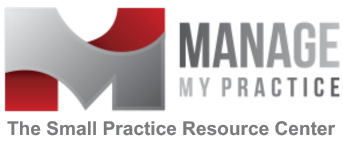
It’s always a fantastic feeling when other people speak on behalf on your products or services, so we were thrilled to see a very nice comment on a recent article at Physician’s Practice “Patient Balances: Get Them or Get Ready to Close Your Practice.” The article details the importance of collecting patient balances as quickly and effectively as possible as doctors face declining reimbursements and increasing overhead and regulation. We have long championed the Credit Card on File system – where patients leave a credit card securely on file with the practice’s gateway and the card is charged after insurance is billed for any patient balances under $100. Balances above $100 (or whatever limit a practice may set) are either placed into a payment program, or paid in full after contacting the patient. One of our very successful clients whose practice has implemented such a program commented on the article about her own experience.
We started a year ago with a Credit Card on File program, on the advice of Mary Pat Whaley. After 1 year, our patient balances are very small, and for practically every balance over 90 days old, the patient is on a payment plan, but since our overall patient A/R is very small, it doesn’t represent a lot of outstanding income. We have over 2000 credit cards on file. Patients are not allowed to see the doctor without leaving a card on file, and they agree to this over the phone when they make an appointment. I’ve found it very challenging to understand and charge patient balances upfront, so we’ve opted for Credit Card on File instead. We charge the copay, file the claim, then charge any remaining balance to the card, once the EOB is received. We charge the card if the balance is under $100 (with an email receipt), and if over $100 we call the patient to determine if they want to pay in full or in installments. Most pay in full, and most appreciate the call. We do not send out paper statements. It takes about 1/4 FTE to manage the credit card collections, but I have an excellent receptionist who handles this very nicely with the patients. There are some issues when the card declines, but we follow up with a weekly phone call, and if necessary, a paper statement (not often). There will always be a few that will never pay, but you can’t escape that in this business. We are proud of our credit card collections, which is why I’ve detailed it here so you can consider it for your practice.
Marian @ Tue, 2013-07-23 11:12
Why, thank you very much, Marian!
If you’d like to learn how to start a Credit Card on File program in your own practice like Marian did, then you’ll want to join us next Thursday, August 8th at 3pm EST for “How to Start a Credit Card on File Program in Your Practice” our popular 60-minute webinar and Action Pack that will give you the tools and plan you need to implement the policies.
Spending one hour of your time and $59.95 now can mean all the difference in your bottom line tomorrow.

